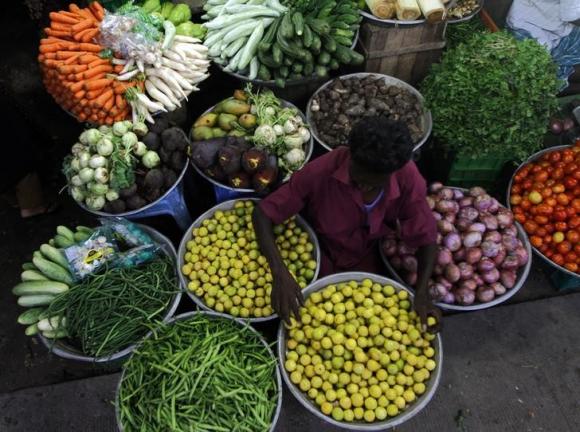
India's wholesale price inflation eased to a five-month low in July, helped by a moderation in fuel costs, but soaring prices for vegetables and fruit are likely to fuel inflationary pressures following the weak start to monsoon season rains.
Adding to inflationary worries are a weak currency and lingering uncertainties over global crude prices due to conflicts in Ukraine and the Middle East. Since its 2014 high, hit on May 23, the rupee has shed 4.7 percent.
Thursday's data comes days after retail inflation hit a two month high, validating the central bank's decision to keep interest rates high despite the broader economy's need for some stimulus to put momentum back in lacklustre growth.
The wholesale price index (WPI) rose 5.19 percent year-on-year last month, its slowest pace since February, and compared with a 5.10 percent annual rise forecast by economists in a Reuters poll. In June, prices rose 5.43 percent from a year earlier.
Surging costs for vegetables, fruit and milk led to a faster-than-expected 7.96 percent on year rise in retail prices in July, a government data showed on Tuesday. Poor rains in some parts of the country has pressured food prices and vegetable prices, for example, are up 68 percent since March.
The central bank wants to reduce retail inflation to 6 percent by 2016. It held rates unchanged last week, in a policy review that cited the risk that inflation could increase due to the weak start to the monsoon.
"It is too early for the RBI to draw any comfort," Rupa Rege Nitsure, chief economist at Bank of Baroda in Mumbai, said. "They are likely adopt a wait and watch approach for now."
Rains improved last month, and there are forecasts for a stronger second half to the four-month monsoon season running from June through September.
But, the central bank's determination to tamp down price pressures have dampened market expectations for a rate cut before the first half of next year.
Prime Minister Narendra Modi, elected in May amid anger over persistently high inflation, particularly food inflation, has made cooling prices a top priority for his administration.
He has ordered a crackdown on hoarding, and set limits on the export of staples, such as onions and potatoes. But analysts say these measures, at best, can provide brief relief, and cannot fix a dilapidated supply system controlled by middlemen.
India is the world's second-biggest producer of fruit and vegetables after China, but it battles chronic shortages as an estimated 18 percent of the crop goes to waste every year due to inadequate cold storage and refrigerated transport facilities.
New Delhi estimates it needs to invest $9 billion in the cold supply chain by March 2016 to handle growing output of fruit and vegetables. That is more than 10 times the $822 million allocated in Modi's maiden budget last month, and far more than the government can afford

















